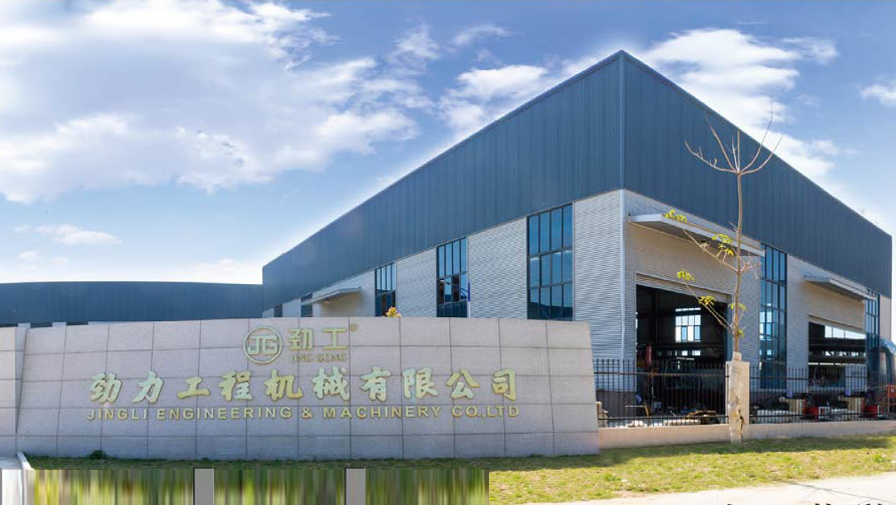
Online Inquiry
The Benefits of Using a Compaction Wheel for Excavator in Construction
TIME:2025-04-19 10:00
The Benefits of Using a Compaction Wheel for Excavator in Construction
In the ever-evolving landscape of construction, efficiency and productivity are of utmost importance. One innovative tool gaining traction is the compaction wheel for excavators. Designed to enhance soil compaction processes, this tool offers a myriad of benefits that can significantly impact construction projects. In this article, we will delve into the advantages of utilizing a compaction wheel, exploring its functionalities, applications, and how it can help you achieve superior results in your construction endeavors.
Table of Contents
- 1. Introduction to Compaction Wheels
- 2. Key Benefits of Using a Compaction Wheel
- 3. Improving Efficiency in Construction Projects
- 4. Cost Savings Through Enhanced Compaction
- 5. Applications of Compaction Wheels in Excavation
- 6. Compaction Wheel vs. Traditional Methods
- 7. Best Practices for Using a Compaction Wheel
- 8. Frequently Asked Questions
- 9. Conclusion
1. Introduction to Compaction Wheels
A compaction wheel is a specialized attachment designed for excavators, transforming them into efficient machines for compacting soil and other materials. With its unique design featuring tightly packed rollers, the compaction wheel effectively compresses the ground, ensuring uniform density. This tool is particularly advantageous in a variety of construction scenarios such as road building, foundation preparation, and landscaping projects.
2. Key Benefits of Using a Compaction Wheel
The incorporation of a compaction wheel in construction practices provides numerous benefits, making it a preferred choice among contractors and construction managers. Here are some essential advantages:
2.1 Enhanced Soil Compaction
The primary advantage of a compaction wheel is its ability to deliver superior soil compaction compared to traditional methods. The design allows for more consistent pressure application, resulting in a denser and more stable substrate.
2.2 Versatility and Adaptability
Compaction wheels are versatile attachments that can be used across various soil types and construction applications. Whether dealing with granular soils, clay, or mixed materials, these wheels can adapt to different conditions, ensuring optimal performance.
2.3 Reduced Labor Costs
By streamlining the compaction process, compaction wheels can significantly reduce labor costs. Fewer passes are required to achieve desired compaction levels, allowing crews to focus on other essential tasks, thereby improving overall productivity.
2.4 Improved Project Timelines
Time is of the essence in construction, and utilizing a compaction wheel can expedite project timelines. The efficiency of the compaction process means that tasks can be completed more quickly, allowing for faster project completion.
2.5 Enhanced Environmental Sustainability
Utilizing a compaction wheel can also contribute to environmentally sustainable practices. By achieving optimal compaction, less material is needed for backfill, which can minimize waste and reduce environmental impact.
3. Improving Efficiency in Construction Projects
Efficiency is a critical component in the success of any construction project. The use of a compaction wheel enhances operational efficiency in several ways:
3.1 Faster Compaction Processes
The compaction wheel allows excavators to cover large areas quickly, significantly reducing the time spent on compaction tasks. This rapid operation is essential in keeping up with project timelines and meeting deadlines.
3.2 Consistent Results
With a compaction wheel, contractors can expect consistent results across different job sites and soil types. This reliability ensures that the foundation is uniformly compact, leading to fewer issues during construction.
3.3 Elimination of Gaps and Voids
The design of the compaction wheel minimizes the occurrence of gaps and voids in the soil, which can compromise the integrity of structures. A well-compacted foundation is crucial for ensuring the stability and longevity of buildings and roads.
4. Cost Savings Through Enhanced Compaction
Investing in a compaction wheel can lead to significant cost savings, making it a wise choice for construction companies.
4.1 Decreased Material Costs
Effective soil compaction can reduce the need for additional fill material. By achieving the required compaction levels, projects can minimize excess material purchases, leading to lower overall project costs.
4.2 Fewer Equipment Rentals
With improved efficiency and reduced labor needs, companies may find they can complete projects without requiring additional machinery. This reduction in equipment rentals can lead to substantial savings over time.
4.3 Long-term Durability
Proper compaction is vital to ensuring the longevity of structures. By utilizing a compaction wheel, contractors can help prevent future settlement issues, saving money on repairs and maintenance in the long run.
5. Applications of Compaction Wheels in Excavation
The versatility of compaction wheels makes them suitable for various construction applications. Here are some common uses:
5.1 Road Construction
Compaction wheels are essential in road construction projects, ensuring that the base and sub-grade are adequately compacted for optimal road stability and longevity.
5.2 Foundation Preparation
When preparing building foundations, achieving the right soil density is critical. Compaction wheels help create a solid base for structures, reducing the risk of settlement.
5.3 Utility Trenches
In projects involving utility trenches, compaction wheels can quickly and efficiently compact backfill material, ensuring that utility lines remain protected and stable.
5.4 Landscaping and Site Development
For landscaping projects, proper soil compaction is crucial for plant health and stability. Compaction wheels help create a solid groundwork for landscaping features.
6. Compaction Wheel vs. Traditional Methods
When comparing compaction wheels to traditional compaction methods, the differences are stark.
6.1 Manual Compaction Techniques
Manual techniques often require more labor and time, leading to inconsistent compaction results. Compaction wheels provide a mechanized solution that enhances speed and efficiency.
6.2 Vibratory Rollers
While vibratory rollers are effective, they may not be suitable for all soil types and can leave behind inconsistencies in compaction. Compaction wheels offer a more versatile solution that can be applied across various conditions.
7. Best Practices for Using a Compaction Wheel
To maximize the benefits of a compaction wheel, it’s essential to adhere to best practices:
7.1 Regular Maintenance
Ensuring the compaction wheel is well-maintained will enhance performance and longevity. Regular checks for wear and tear should be a part of routine equipment care.
7.2 Adjusting Operating Speed
Optimal compaction results can often depend on the speed of operation. Adjusting the speed according to soil conditions can lead to better compaction outcomes.
7.3 Proper Attachment to Excavator
Ensuring that the compaction wheel is correctly attached to the excavator is crucial for safe and effective operation. Always follow manufacturer guidelines when attaching equipment.
8. Frequently Asked Questions
8.1 What is a compaction wheel?
A compaction wheel is an attachment for excavators designed to enhance soil compaction effectively.
8.2 How does a compaction wheel work?
It uses a series of rollers to apply pressure on the soil, compacting it uniformly and efficiently.
8.3 What types of soil can a compaction wheel be used on?
Compaction wheels are versatile and can be used on various soil types, including granular and clay soils.
8.4 How does using a compaction wheel reduce labor costs?
By speeding up the compaction process, fewer workers are needed, and they can focus on other critical tasks, improving overall efficiency.
8.5 Are there any drawbacks to using a compaction wheel?
While compaction wheels offer many benefits, they may have limitations in certain soil conditions and require skilled operators for optimal use.
9. Conclusion
In summary, the advantages of incorporating a compaction wheel into your excavator significantly enhance the efficiency and effectiveness of construction processes. From reducing labor costs to improving project timelines and ensuring a stable foundation, the benefits are numerous. As construction continues to evolve, embracing innovative tools like the compaction wheel will position contractors for success in an increasingly competitive market. By investing in this attachment, construction teams can improve their operational capacity, reduce costs, and deliver projects of superior quality.
Related News
2025-04-25










